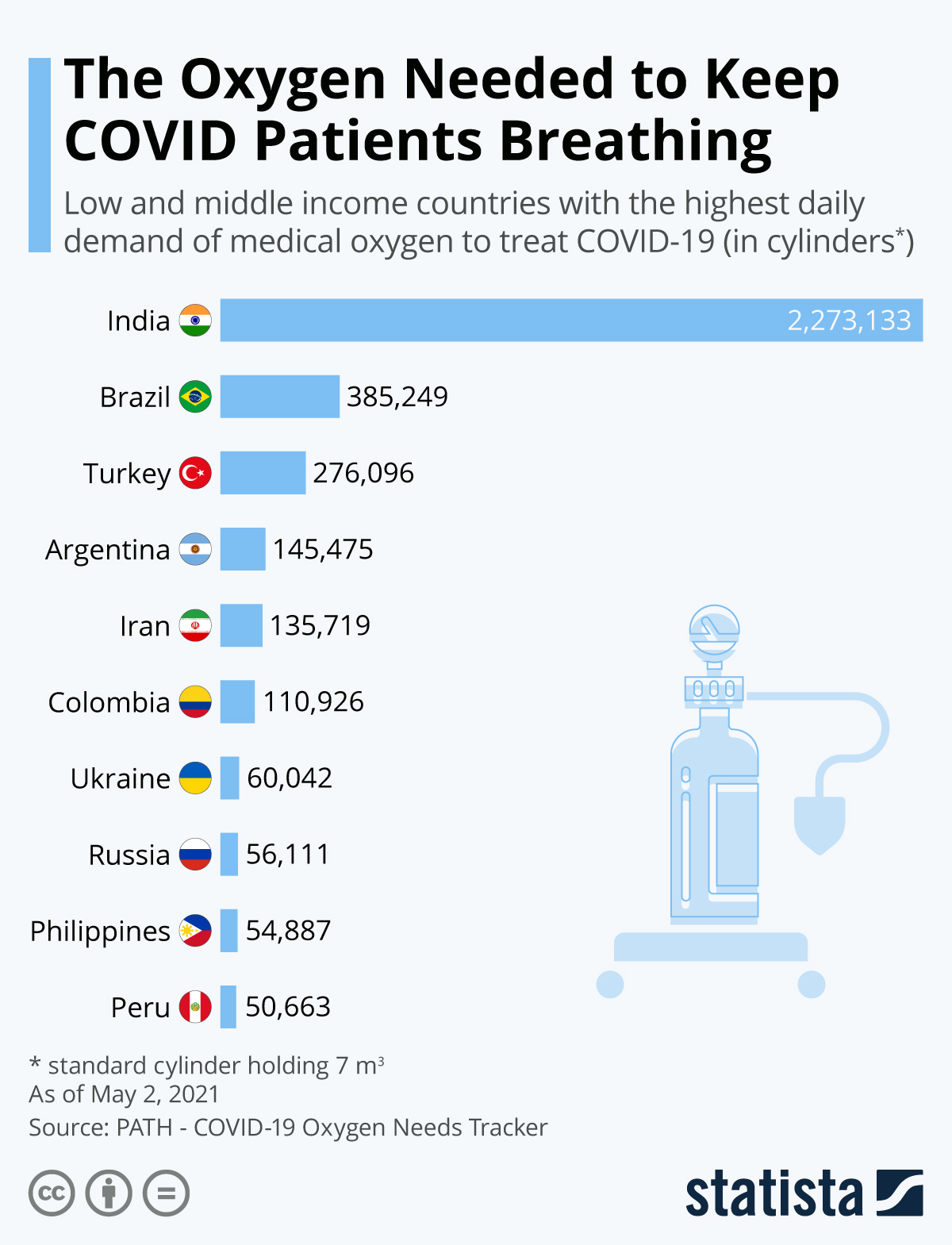The medical oxygen demand in India already reached almost 2 million standard 7 mᶾ cylinders per day,according to data from the NGO PATH (as of April 27, 2021.) This amount is more around five times the demand in Brazil, which required around 388,000 cylinders per day. Since the country cannot stem the demand itself, countries like the UK and organizations like the WHO have started donating oxygen concentrators, which filters concentrated oxygen from the air.
Both India and Brazil are struggling with new variants of the coronavirus. Mutation P.1, which is raging in Brazil, has brought about an unprecedented level of mortality from COVID-19. Indian variant B.1.617 has only recently gained attention. The double mutation has shown a prevalence of 50 to 60 percent in new infections in limited trials on the subcontinent, but patchy sequencing efforts make it hard to pinpoint if the mutation is indeed at the heart of the devastating outbreak. Also present in India is the UK variant B.1.1.7, but both are not evading vaccine protection according to current analysis.
Three other Latin American nations, Argentina, Colombia and Peru, are also among the developing economies with the highest oxygen demand. In Europe, Turkey is seeing the most out of control outbreak, followed by Ukraine.

No comments:
Post a Comment